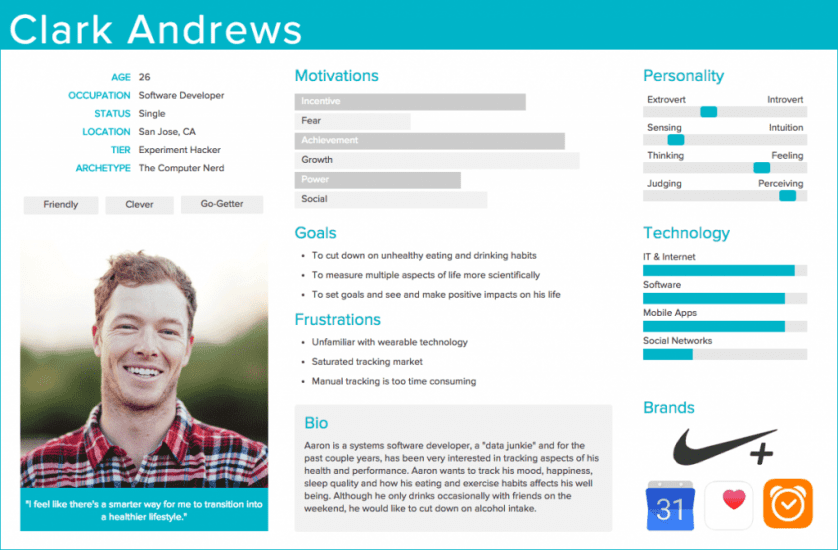Does your association have member personas that are well-known throughout the organization? If not, it’s time to build some!
Having clearly defined member personas will help you better target and personalize your content so that you can best serve your audience every time. They help you internalize and understand your ideal members so you can better communicate with them and recruit more members who are represented by that particular persona.
What are member personas?
A persona is an imaginary representation of your ideal member. Personas contain detailed information on who the member is, along with their goals and challenges. Because your association appeals to many different types of people, you will have more than one persona that represents your ideal member. For example, your ideal student member is not the same person as your ideal professional member. Each needs to be addressed and marketed to in distinct ways, and having defined personas can help you do so.
Customer personas should include the following information:
- Demographics (gender identity, age, education level, job title, familial status)
- Goals
- Preferences (events they’re interested in, communication channels, how they find your association, etc.)
- Frustrations and challenges
Ways to use your personas
Creating member personas helps you empathize with your members and leads, thereby building better connections. Personas should inform your marketing and communication strategies and can be applied in a number of ways, such as:
- Building a content strategy that speaks to each persona’s interests and concerns.
- Segmenting your email marketing lists so you can address your leads and members more specifically and strategically.
- Tailoring recruitment copy to each persona, as you’ll have a better grasp of their motivations and objections.
- Using the personas to plan new events and content to create since you understand what your ideal member is looking for.
How to create detailed personas
Creating member personas for your association isn’t a guessing game. Instead, it’s backed by real data and insights. Follow these steps to learn how to effectively create member personas that reflect your ideal members.
1. Analyze the data you have at hand
Dig through your applications and CRM software to glean demographic information and common recurring patterns. In addition to demographic information, review surveys to find out why they said they joined your association.
Ask employees on the member recruiting and engagement teams for details on the type of leads they interact with most, and what insights they have based on their experience.
Don’t forget to dig into your digital data, too! Google Analytics, Google Ads, and social media marketing tools are gold mines for unlocking audience insights. You can collect interesting demographic, behavioral, and affinity information from these platforms.
2. Interview members
Go straight to the source. Line up interviews with some of your current members to learn about their goals and pain points. Ask them about why they joined, how they found you, where they get their industry resources from, and what they like and don’t like about your association. Though it might be a more difficult conversation, be sure to speak with members who are less engaged, recently left, or aren’t as happy with your organization as others. This will unlock some valuable insights into their challenges as well as opportunities for your association to improve.
3. Break down your data into like categories
Consolidate and categorize the data you’ve collected, and break them into about 3-5 segments. The different segments you create will become your individual personas. Go ahead and give each persona a name — this helps with both humanization and recall.
4. Build your member personas
Create a layout for your personas in a visual tool that’s easy to edit and update — slide decks work great for this, as you can have an individual slide for each persona. Your layout should include areas for a name, photo, background information, demographics, motivations, challenges, and a quote.
See this example member persona from Adobe for inspiration:

Credit: Adobe
5. Write your persona’s story
This is where you flesh out all of the information you learned from your data collection and interviews to create well-rounded personas and define who each of your personas truly is. Here’s an example:
Mallory the Young Professional
- Age: 26
- Gender: Female
- Education level: Master’s degree
- Family: Single, lives with roommates
- Job title: Logistics coordinator
- Income: $48,000
- Location: Charlotte, NC
- Background: Mallory has worked for the same company in the logistics industry for a few years. It’s her first “real” job after college. She has been promoted above the entry-level position she started at, but she wants to increase her salary to help her cover her student loans and bills. She enjoys learning and takes pride in her strong work ethic. She invested in her education and is eager to reap the benefits.
- Goals:
- Accumulate more industry knowledge
- Network with others in the industry
- Earn a promotion or find a higher-level position at another company
- Pay off student loans as quickly as possible
- Move to her own place without roommates
- Frustrations:
- Doesn’t feel fulfilled in her current job
- Doesn’t feel like she’s using her education to the fullest extent
- Membership cost is a challenge for her budget
- Preferences: Mallory prefers digital communication. She reads texts, emails, and is active on social media. She doesn’t like talking on the phone or the waste that comes with paper-based communications.
- Quote: “I know I’m still in the early stages of my career, but I’m ready to hustle and advance. I love this industry, but I wish the job I was doing was more impactful and important. I want to expand my knowledge and network with experienced pros so I can move up in my career.
6. Strategize how you’ll connect with each persona
Mallory the Young Professional and Bob the Business Owner are not the same people, and the way you address each should reflect that. Once you’ve developed your member personas, write a short elevator pitch for your association that will resonate with each specific persona, speaking to their motivations and pain points.
Now that you’ve built your personas, the next thing to do is put them into action. The better you know your audience, the better you can serve and communicate with them. Keep your personas in mind for all of your sales and marketing activities, from content planning to converting new members.

October 4, 2021


